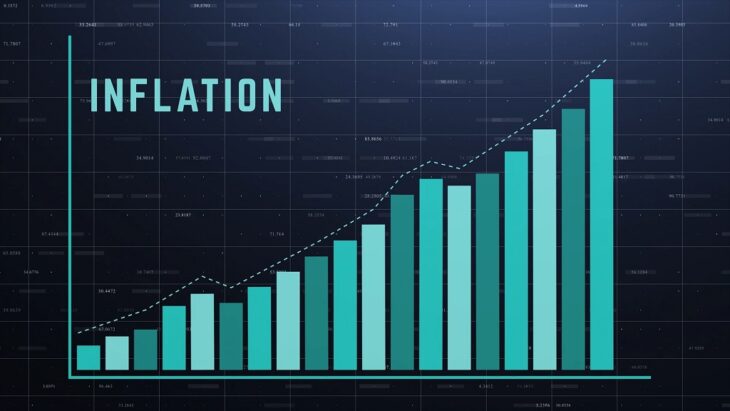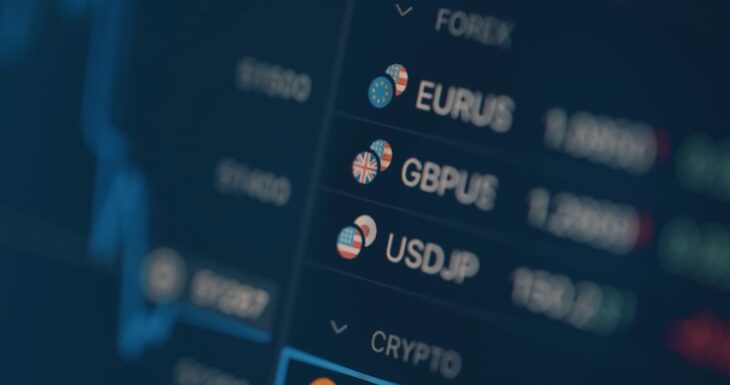Yes, central bank decisions are one of the most powerful forces behind currency valuation. When a central bank raises interest rates, the national currency typically appreciates because higher returns attract foreign capital.
When it cuts rates or launches quantitative easing, the currency usually depreciates due to lower investment yield and increased money supply. These moves affect everything from exchange rates and cross-border investments to commodity prices and inflation.
For example, in 2022 and 2023, the U.S. Federal Reserve’s aggressive rate hikes caused the U.S. dollar to reach 20-year highs against the euro, yen, and pound. On the flip side, Japan’s continued low-rate policy and yield curve control weakened the yen to levels not seen since the 1990s.
Central bank announcements can move global currency markets by 1–3% within minutes, impacting trillions in trade, finance, and investment.
Interest Rate Changes: The Most Immediate Impact

Central banks use the policy interest rate as their primary lever for influencing economic activity. Adjusting this rate directly impacts short-term borrowing costs for commercial banks, which in turn affects loan rates for consumers and businesses.
Why It Matters:
Higher interest rates make a country’s financial assets (like government bonds) more attractive to investors seeking yield. This capital inflow increases demand for the currency, causing it to appreciate.
Conversely, lower rates drive investors toward higher-yielding markets elsewhere, leading to depreciation.
Real-World Example:
Between March 2022 and July 2023, the U.S. Federal Reserve increased the federal funds rate from 0.25% to over 5.25%, marking one of the steepest tightening cycles in decades.
During that period, the U.S. dollar index (DXY) rose from around 95 to 113, a nearly 20% increase, significantly strengthening the USD against the euro, yen, and emerging market currencies.
| Scenario | Likely Currency Effect |
| Rate hike | Currency appreciates |
| Rate cut | Currency depreciates |
| No change, dovish tone | Likely depreciation |
| No change, hawkish tone | Likely appreciation |
Inflation Targeting and Forward Guidance

Central banks aim to maintain price stability, typically targeting an annual inflation rate of around 2%. Forward guidance is the tool used to communicate their expectations for inflation and interest rates before policy shifts occur.
It significantly influences currency traders, who often react more to tone and projections than to actual policy changes.
How It Affects Currencies:
If a central bank signals it will act against rising inflation by tightening policy, markets anticipate future rate hikes, and the currency often strengthens in advance.
On the other hand, if it downplays inflation or adopts a wait-and-see approach, investors expect prolonged loose policy, weakening the currency.
Real-World Example:
The European Central Bank (ECB) frequently moves the euro through speeches rather than actions. A single hawkish comment by ECB President Christine Lagarde in 2023, indicating potential rate hikes, caused the EUR/USD exchange rate to rise nearly 1.5% in a day, even though no official rate decision had been made.
Quantitative Easing (QE) and Quantitative Tightening (QT)
Quantitative Easing (QE) is used when interest rates are near zero and additional stimulus is needed. It involves large-scale asset purchases by the central bank, increasing the money supply and reducing long-term interest rates.
Quantitative Tightening (QT) is the reverse—central banks sell assets or let them mature, shrinking their balance sheet and withdrawing liquidity.
Currency Implications:
- QE leads to currency depreciation by increasing the money supply and lowering yields.
- QT typically strengthens the currency, as money supply contracts and bond yields rise.
Real-World Example:
From 2009 to 2014, the Federal Reserve injected over $3.5 trillion into the economy via QE. The dollar weakened broadly during this period. In contrast, the start of QT in 2017 led to a renewed dollar rally, as investors viewed the Fed’s balance sheet reduction as a sign of economic strength and tightening policy.
Currency Market Intervention
Some central banks engage in direct market intervention to manage their currency’s value, especially if they operate under a fixed or semi-fixed exchange rate system.
Interventions can involve buying or selling large amounts of foreign exchange to influence supply and demand dynamics.
Use Cases:
- Prevent currency appreciation that harms exports
- Maintain a peg to another currency (e.g., USD or EUR)
- Reduce volatility during times of market stress
| Type of Intervention | Typical Effect |
| Buying own currency | Currency strengthens |
| Selling own currency | Currency weakens |
| Removing a peg or a floor | Currency volatility spikes |
Notable Examples:
In 2015, the Swiss National Bank (SNB) abruptly ended its euro peg, causing the Swiss franc to surge over 20% in minutes, disrupting global markets.
The Bank of Japan (BoJ) has a history of intervening to weaken the yen to support its export-heavy economy. In October 2022, it spent over $40 billion to stabilize the yen as it approached multi-decade lows.
For traders trying to capitalize on such movements, having a flexible forex trade account is essential. These accounts allow individual investors to respond in real time to central bank intervention, whether speculative or hedging, g—by positioning themselves in affected currency pairs as news breaks.
Central bank actions can move currency pairs by 1–3% within hours, meaning fast execution and margin access can be critical.
Political Mandate and Market Confidence

A central bank’s credibility and independence are critical in maintaining a stable currency. If markets believe a central bank is being influenced by political interests rather than economic data, confidence can erode quickly, ly—leading to capital flight and sharp depreciation.
Risk Factors:
- Frequent policy reversals
- Lack of transparency or communication
- Political interference in rate decisions
Real-World Example:
In Turkey, the central bank came under political pressure to cut rates despite soaring inflation. As a result, the Turkish lira lost over 40% of its value in 2021 alone, as global investors lost trust in the bank’s independence and inflation-fighting commitment.
Global Risk Sentiment and Safe Haven Flows

Currencies are not always influenced by domestic monetary policy alone. During periods of global uncertainty, investors seek safety in stable, liquid currencies like the U.S. dollar, Swiss franc, and Japanese yen.
Even if a central bank lowers interest rates (which usually weakens the currency), safe-haven flows can still drive currency appreciation.
Conversely, in risk-on environments, money often flows toward higher-yielding emerging market currencies, regardless of their central bank policy.
Example:
In early 2020, as COVID-19 triggered panic across global markets, the U.S. dollar surged, even while the Fed slashed rates to zero. Investors prioritized capital preservation over yield.
Time Lags, Trader Sentiment, and Overreaction

Currency markets are not always efficient or rational. Traders often respond to expectations and tone, not just numbers. Moreover, central bank decisions can have delayed or contradictory effects depending on how they’re interpreted.
Market Behavior:
- Front-running: Traders anticipate a move and price it in early.
- Overreaction: Short-term volatility exaggerates policy impacts.
- Whipsawing: Currencies may rise, then fall, as sentiment shifts post-announcement.
Example:
In March 2023, the Fed raised interest rates by 25 basis points, a hawkish move. But its dovish tone during the press conference—hinting at an upcoming pause—led to a sharp drop in the U.S. dollar, as markets shifted focus from the rate change to the forward guidance.
Conclusion
Central banks are among the most influential players in the global currency markets. Through a mix of interest rate decisions, asset purchases, communication strategies, and direct interventions, they shape capital flows, inflation expectations, and ultimately, currency strength or weakness.
Investors, importers, exporters, and governments all react to these signals—often within minutes. Understanding the mechanics and historical context of each tool allows you to better interpret currency moves and anticipate market shifts in a fast-moving global economy.
If you track currencies, central bank calendars and speeches are not just background noise—they are market-moving events that reshape exchange rates worldwide.


